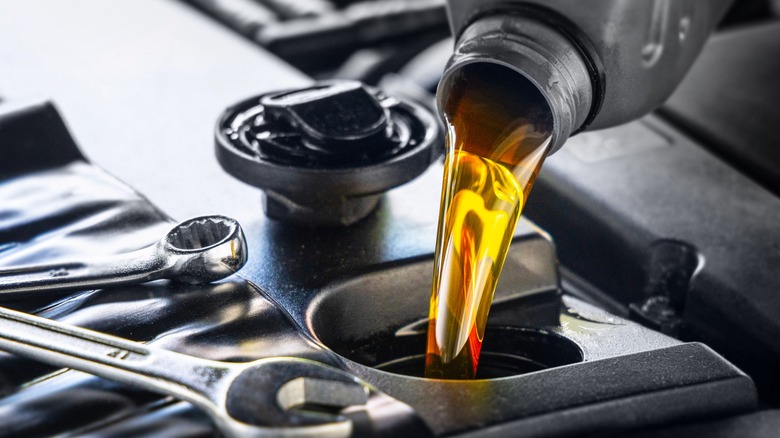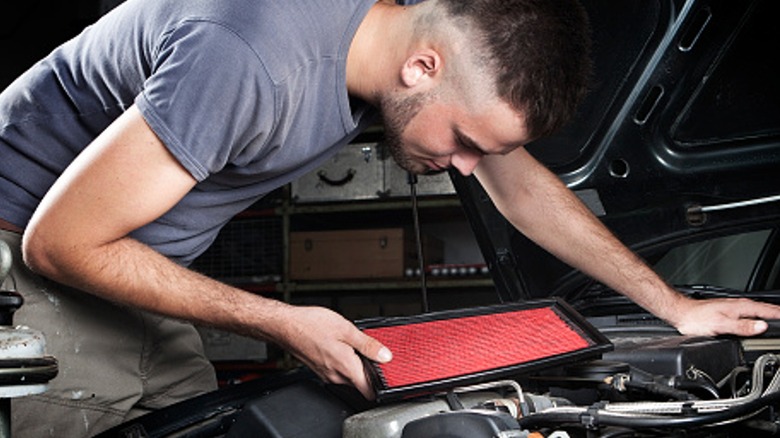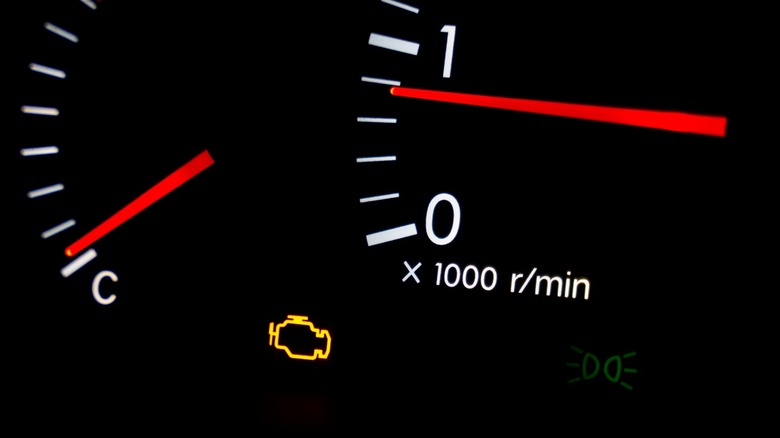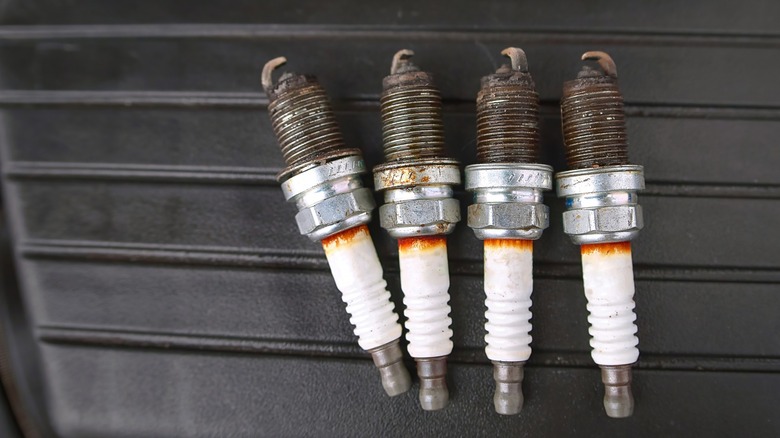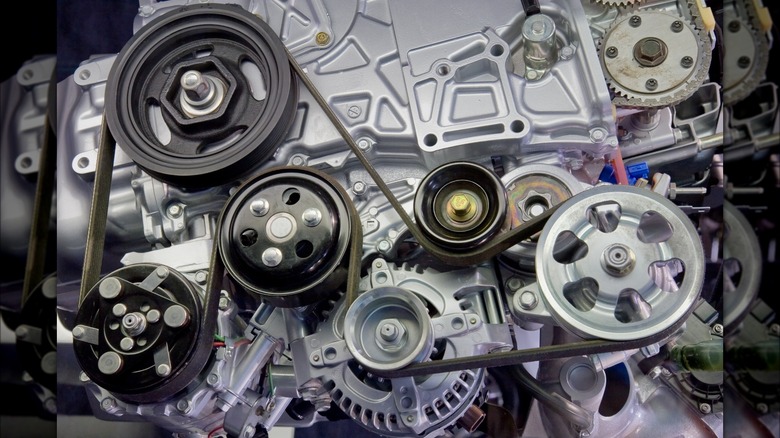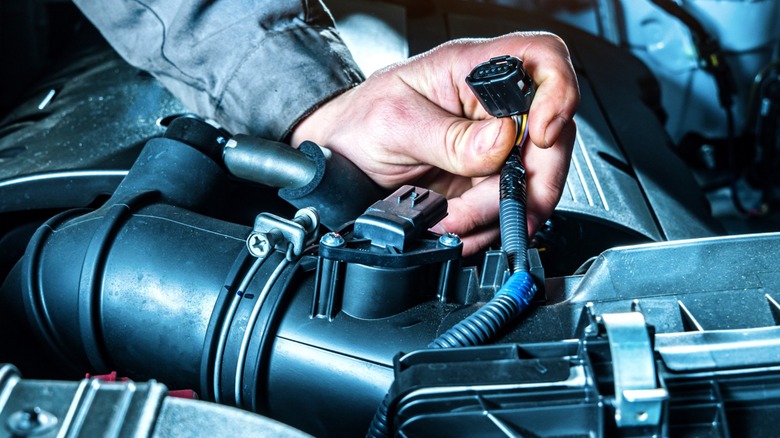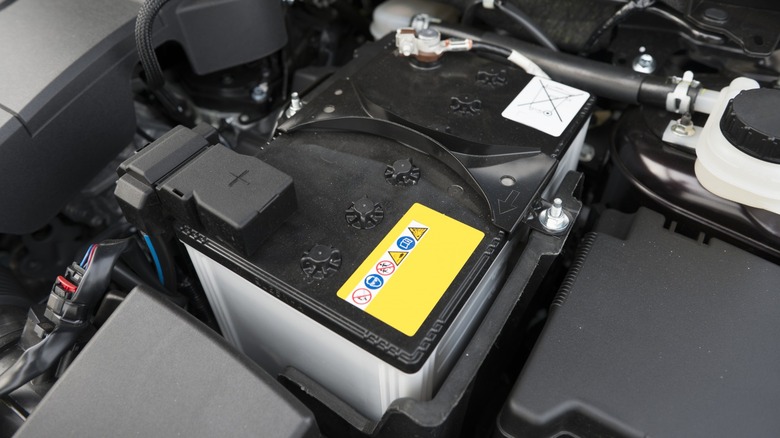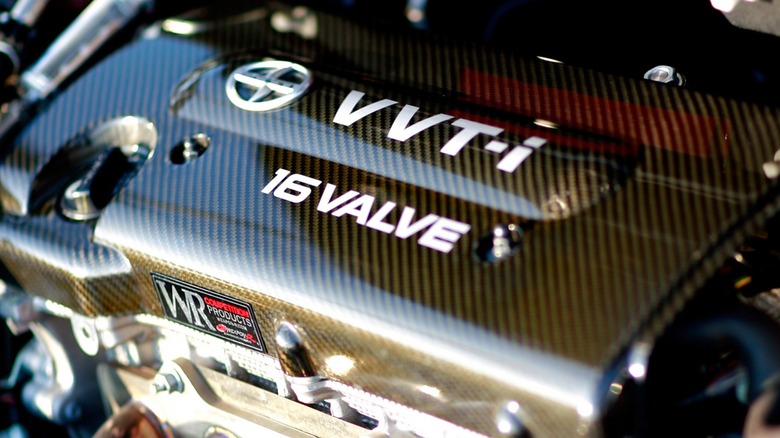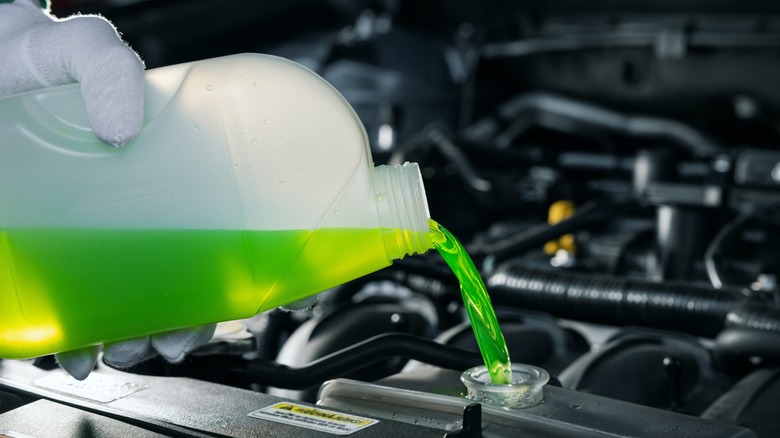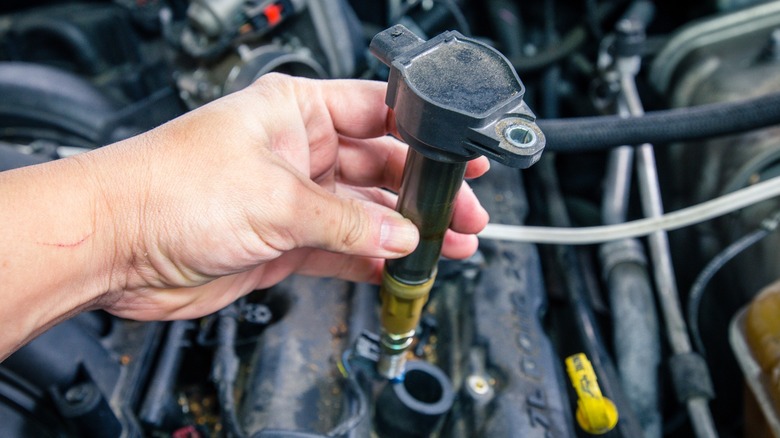10 DIY Engine Maintenance Tasks You Can Do At Home
Every car owner knows their vehicle will require maintenance at some time. This can range from changing the engine oil to replacing brake pads, and every job comes with a different degree of difficulty. Regardless, maintenance is not something to be ignored as it is one of the best examples to prove the adage, "An ounce of prevention is worth a pound of cure."
Servicing your auto can be a very frustrating experience in today's busy world, and auto shops everywhere are getting busier all the time, making it difficult to schedule routine service on your schedule. Furthermore, with average labor rates hovering around $120 per hour, it is extraordinarily expensive. But knowing that skipping or delaying a $50 service can lead to a $500 repair, it is best to bite the bullet and make time to schedule a service appointment. That is, unless you can do it yourself on your own time. With some basic hand tools and a little mechanical intuition, you may very well be capable of doing these basic engine maintenance services yourself at home. I graduated from technical school and have serviced many makes of cars for years, and these are the jobs I think semi-skilled novices can perform themselves.
Change oil
All engines require oil for lubrication of the internal parts and mechanisms. But as the miles pile up on the car, the oil contained within the engine suffers from degradation from accumulating debris and the breakdown of the oil from the heat and pressure it must withstand. With enough miles, its capacity for lubrication is diminished and metal parts begin to wear out more quickly. That is why you must change the oil regularly. At one time, every three months or 3,000 miles was given as a general rule. Today, engines are built with better materials and tighter tolerances while oil chemistry has improved, leading manufacturers to spread change intervals over more miles, although many professionals recommend replacing it sooner than recommended anyway.
Changing the oil in your car is certainly a job you can do at home on most cars, especially as the cost of oil changes keeps rising. The biggest stumbling block on modern cars can be oil filters that are difficult to reach without the benefit of having them raised overhead on a lift. Nonetheless, provided your vehicle has an easily accessible filter, you should be able to change the oil with confidence. The only other potential issue is oil disposal. Most auto parts stores will accept used motor oil for recycling and most cities of a reasonably large size likely offer waste chemical collections as part of their municipal waste removal service.
Change air filter
Another of the easiest maintenance items is one of the most overlooked, the engine air filter. Keeping a clean filter is paramount to the proper operation of your vehicle, and a dirty filter can decrease fuel mileage and impact performance. The air filter ensures what goes into your engine is nothing but atomized fuel and fresh air. Without a filter, dirt and debris from the environment could pass through the intake and potentially cause a lot of damage deep inside the crankcase. Small dirt particles getting inside the combustion chamber can cause the sensitive metal parts to become scored, leading to premature failure of bearings, piston rings, and valve train components. A good clean air filter prevents this.
Most modern cars have an air filter encased in a plastic box somewhere toward the front of the engine compartment. Access to the filter is gained by removing a few screws or metal clasps, and the filter is easily removed and replaced. Most recommended replacement schedules fall between 30,000 to 45,000 miles, but they should be replaced more often for cars driven regularly on dirt roads or in otherwise dusty environments. If you have owned your car for some time and have yet to replace yours, it may be a good idea to do so, as they are not expensive parts for typical passenger cars.
Check engine trouble codes
Your fuel-injected car, which includes anything from the 1990s until today, functions with a central computer called the electronic control unit (ECU). This performs countless calculations every minute to keep the engine running at peak efficiency while providing optimal power and the lowest possible emissions. It relies on an array of sensors providing information about environmental conditions, as well as feedback from the engine itself. As long as those sensors provide inputs within an expected range, the ECU can control spark timing and fuel flow, resulting in a perfectly running engine. But when things go wrong, it alerts you by illuminating the check engine light (CEL).
When the CEL lights up, technicians can obtain trouble codes to help diagnose the malfunction that tripped the CEL. Sometimes a combination of malfunctions causes multiple trouble codes while at other times, multiple codes come from a cascade effect in which one sensor malfunctions and throws off the inputs of others. Reading trouble codes alone may not be enough to diagnose a problem, but they help. Furthermore, anyone can obtain the codes by using a scanner plugged into the OBD2 port, which all cars built starting with the 1996 model year have. OBD2 scanners can be picked up these days for as little as $20 for basic models. Even if you cannot properly diagnose your car with one, you can at least use it to keep your mechanic honest, so it is worth investing in one and keeping it handy.
Change spark plugs
Recommendations and advice on changing spark plugs can vary wildly depending on the age of the person offering the suggestion. This is because the materials used to manufacture spark plugs have changed drastically over the last 30 or so years. Older cars required regular changes of plugs because they wore down relatively quickly and performance suffered, especially since older ignition systems were nowhere near as efficient and powerful as modern ones. Spark plugs used to use nickel for the electrodes, but advanced metallurgy gave way to platinum, then iridium, and finally ruthenium, making them extraordinarily durable and long-lasting.
For the most part, if your car's engine is functioning properly, there is no reason to change the plugs. Tune-ups are generally no longer needed, as everything is controlled electronically with nothing to be adjusted and cars no longer have spark plug wires to replace. If you are experiencing some stumbling upon acceleration and your car has well in excess of 100,000 miles, it may be a good time to install new spark plugs, and you may be able to do it yourself. On many 4-cylinder cars, it may only take an hour. V8 models can have plugs located in more difficult-to-reach locations and some new cars should really only be serviced by a professional. This one boils down to a judgment call based on your skill level.
Replace drive belts
Every car with an internal combustion engine sold today includes some number of accessories driven by the engine. Power for these systems comes directly from the crankshaft and is transferred with a belt. The exception in some late-model cars is electric power steering, which is driven by a motor receiving power from the electrical system. Otherwise, hydraulic power steering, air conditioning, and electrical systems are driven by a serpentine belt on modern cars and V-belts on vintage automobiles. These belts can fail for a few reasons, but old age is usually what causes them to break. As the rubber ages, it dries and cracks, reducing the tensile strength of the belt, leading to failure. Fortunately, you can fix this on your own for many cars.
Replacing V-belts on older cars is relatively easy, but serpentine belts require a bit more skill. I would recommend only those with above an amateur skill level attempt changing the serpentine belt, as an improperly installed belt can lead to you pulling all of your hair out. This is because belts can only be installed one way and they often use convoluted routing around several pulleys that snake through and around engine parts, mounts, and other accessories on the front of an engine, which is usually in a cramped space. Before attempting this job, I advise checking how-to videos on YouTube to see if your car would allow this to be attempted. Replacing the belt can be tricky, and experienced mechanics can make it look easier than you think.
Clean mass air flow sensor
Modern engines rely on a variety of sensors to gauge certain conditions, in order to provide an adequate supply of fuel and air, along with properly timed ignition for optimal running conditions. Inputs from sensors are continuously monitored by the ECU, which then adjusts fuel and ignition to create the perfect conditions to achieve maximum efficiency for power and emissions output. Many of these sensors require advanced knowledge to diagnose issues and repair or replace when necessary. However, the mass airflow sensor can often be cleaned instead of being replaced, and it is often very easy to reach.
The mass airflow sensor detects how much air is going into the engine. It is part of the air intake system and is usually located after the air filter on a snorkel leading up to the intake manifold. The sensor may be part of an assembly that makes up a segment of the air intake, or just the sensor installed into the side of an assembly. Regardless, most of them can be removed in a few minutes. Parts stores sell mass air flow cleaners just for this job, and nothing else should ever be used. They are safe to use on sensitive electronics and any other cleaner, such as brake cleaner, will damage the sensor. If you have poor acceleration or rough idling, cleaning the mass air flow sensor may help, and it is a cheap and easy thing to try before taking the car into the shop. Furthermore, a trouble code for a mass air flow malfunction can trip the CEL, making diagnosis easy.
Replace battery
There's nothing worse than getting ready for work early in the morning, only to go out to your car and find the battery has gone dead. (Except for finding your car has been stolen. That is objectively worse.) But if your battery is wasted, do not fret. You can replace it yourself with minimal basic tools.
With the exception of a few particular models, replacing the battery is easy. However, if you own a Dodge Journey, you may need a tow, as the battery is located behind the fender liner in front of the left wheel and takes more than an hour to replace. Otherwise, most cars these days either have the battery prominently located under the hood and easily accessible, or in the trunk. A few models, such as some Buicks, put the battery under the rear seat. These are all relatively easy positions, as long as you can gain access with minimal effort. It is important to always remove the negative cable first and replace it last — this prevents accidentally starting a fire by grounding the positive battery post with your wrench.
You will also want to research your car, as some models can have ECU issues when swapping a battery. I used to work at a Volkswagen dealer where usually (once a month), someone had to tow their Beetle to the dealer because it lost programming for the keys. Late-model BMWs also need to have the ECU updated to tell it the battery is new. With a cursory search online, you should be able to avoid any of these issues.
Replace valve cover gaskets
Oil leaks are frustrating problems to have. They can cause multiple headaches, from soiling your garage or driveway, leaking onto the exhaust manifold (resulting in a burning oil smell), and requiring additional oil purchases to keep it full. A common source of oil leaks is the valve cover or covers. Replacing a valve cover gasket is sometimes a complex and difficult job, but on many cars, it is surprisingly easy.
Regardless of which car you may have, this is a more advanced task and not recommended for inexperienced mechanics. But if you have a little skill, many four-cylinder cars have a valve cover located prominently under the hood and it takes the removal of 10 to 12 screws to remove it; the task can be done in an hour or two. If you think you can handle a challenge requiring a bit of skill, take a look at your leaking engine for an assessment. If you can clearly see an unobstructed valve cover (once removing any plastic covers), you can likely do it yourself. I would still recommend searching YouTube for a how-to video just to be sure there are no surprises waiting for you as you get halfway through the service.
Coolant flush
Keeping your engine running at the optimal temperature is paramount for smooth running and low-emissions output. Modern automobiles use a water-cooled engine with a pump driving a mixture of coolant and water throughout the engine, taking heat away and dissipating it as it passes through the radiator and back to the engine in a continual process. Newer cars should not need anything done to this closed system for a long time. But if your car has some age and miles on it, you may want to flush the cooling system. This is something you can do at home, but you may not want to.
The coolant has antifreeze properties to keep the water from turning to ice every time it snows. Historically, it has used glycol, although other formulations exist today, particularly for some European models. It is a toxic chemical, and ensuring you can retrieve all of it for proper disposal can be difficult. Glycol has a sweet flavor and animals may want to drink it — it can kill them. It is important to prevent environmental contamination, but if you can, then you can certainly flush it yourself. I recommend getting a coolant flush tool kit to make it easy and ensure you can fully flush all the old coolant from the entire system and not just the radiator. Coolant flushes can cost a couple of hundred dollars, making this a good money-saver if you can handle it.
Ignition coil service
Combustion occurs in a gasoline engine when a spark plug fires, setting off the enriched mixture of gasoline and air. The ignition system has progressed, from the days of having a mechanically operated distributor with a separately mounted ignition coil delivering energy to the spark plugs to having electronically operated individual coils mounted directly to the spark plugs. This has brought the potential voltage of each spark up from about 10,000 volts in the 1960s to 100,000 volts today, providing far greater efficiency and power output. While this makes a more efficient spark that will ignite fuel with more intensity, failed individual coils are a relatively common problem.
If your car is running rough and feels as though it is running on five cylinders instead of its usual six, you probably have a bad coil. Also, do not drive your car if it has a misfire; it will destroy the catalytic converter. The CEL will flash if this is happening. The good news is that coils are very easy to replace on many cars. In most cases, a single 8- or 10-mm bolt holds the coil in place and once removed, the coil can simply be pulled up and out of the way. Installing one is just as easy. No special programming or updates will be required, and a trouble code can usually tell you which cylinder is causing a misfire. This is so easy, you can do this maintenance at home, or even in a random parking lot if you are on the road.

